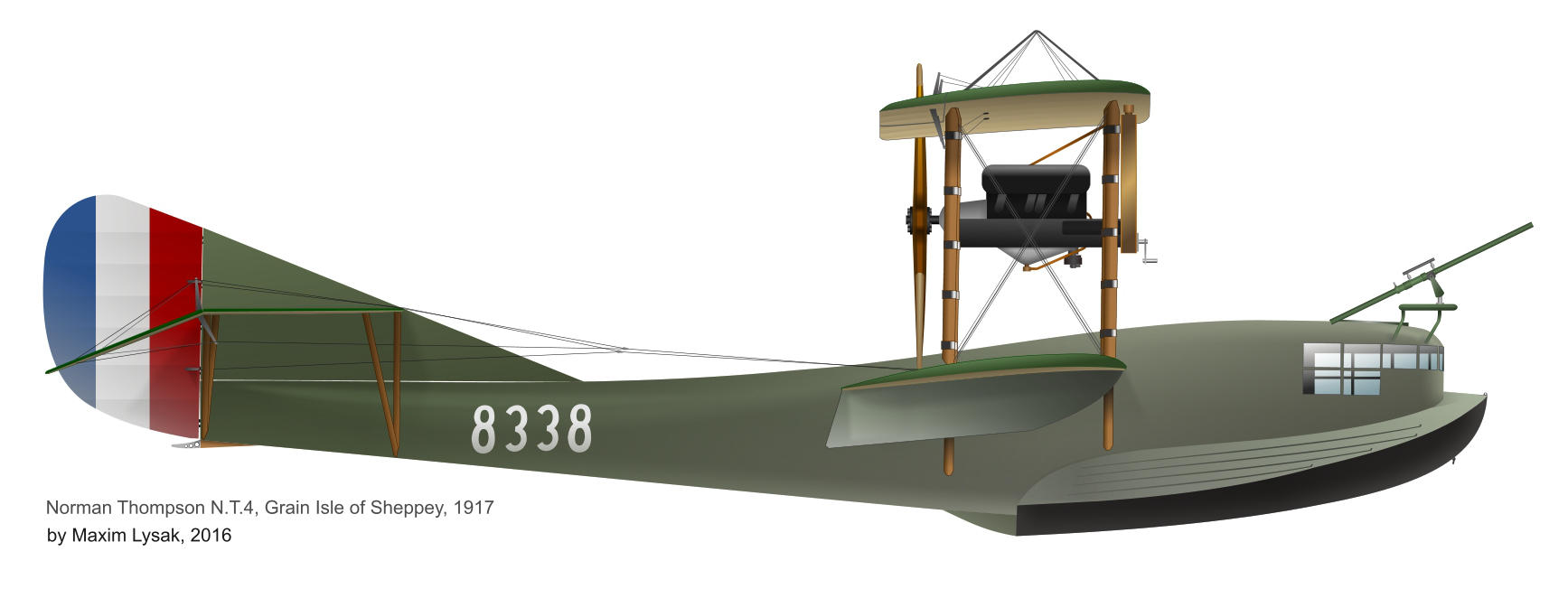
Norman Thompson N.T.4 by Maxim-Lysak
Norman Thompson N. T.
4
The Norman Thompson N. T. 4 is perhaps the least known of all the large flying-boats employed on coastal patrol by the RNAS in the First World War. It never enjoyed the fame that attended the American Curtiss boats, or the Felixstowe series, but nevertheless was responsible for a good deal of routine anti-submarine reconnaissance from a string of bases between Calshot and Scapa Flow.
The N. T. 4 was the first new design to appear after the old
White and Thompson Company changed its name to the Norman Thompson Flight
Company in October 1915, and its emergence coincided with the Curtiss H. 4. For
this reason, in the somewhat haphazard custom of those days, it was known by
the name of ‘America’, and later changed to ‘Small America’, in the same way as
the Curtiss. This may account for the obscurity in which its operational record
is shrouded, as there may have been some confusion between the two types in
official archives.
A feature of the N .T. 4 was the completely enclosed
accommodation for the crew. In the earlier version the view was poor and the
cabin was progressively improved, so that in the late production models the
cabin-top was glazed as well as the sides.
The first batch of aircraft (Nos. 8338 to 8343) were fitted
with two 150 hp Hispano-Suiza engines. Subsequent machines had 200 hp geared
Hispanos, were designated N. T. 4A and were allotted the serial numbers 9061 to
9064 and N2140 to 2159. Production ceased in the summer of 1918 after 30 had
been built.
One of the N. T. 4 flying-boats (No. 8338) was the subject
of an interesting experiment in armament. It was fitted with a Davis
two-pounder recoil-less gun mounted above the cabin. The installation was never
embodied in production aircraft.
UNITS ALLOCATED
RNAS coastal air stations at Calshot, Cattewater. Dundee,
Felixstowe, Invergordon, Killingholme and Scapa Flow.
TECHNICAL DATA (N. T. 4A)
Description: Anti-submarine reconnaissance flying-boat with
a crew of four. Wooden structure, with wood and fabric covering.
Manufacturers: Norman Thompson Flight Co Ltd, Bognor Regis,
Sussex.
Power Plant: Two 200 hp Hispano-Suiza.
Dimensions: Span, 78 ft 7 in. Length, 41 ft 6 in. Height, 14
ft 10 in. Wing area, 936 sq ft.
Weights: Empty, 4,572 lb. Loaded, 6,469 lb.
Performance: Maximum speed, 95 mph at 2,000 ft; 91 mph at
10,000 ft. Climb, . 3 min 50 sec to 2,000 ft; 31 min 5 sec to 10,000 ft.
Service ceiling, 11,700 ft.
Armament: Possibly provision for free-mounted Lewis gun
firing through a side window and racks for bombs beneath lower wings.